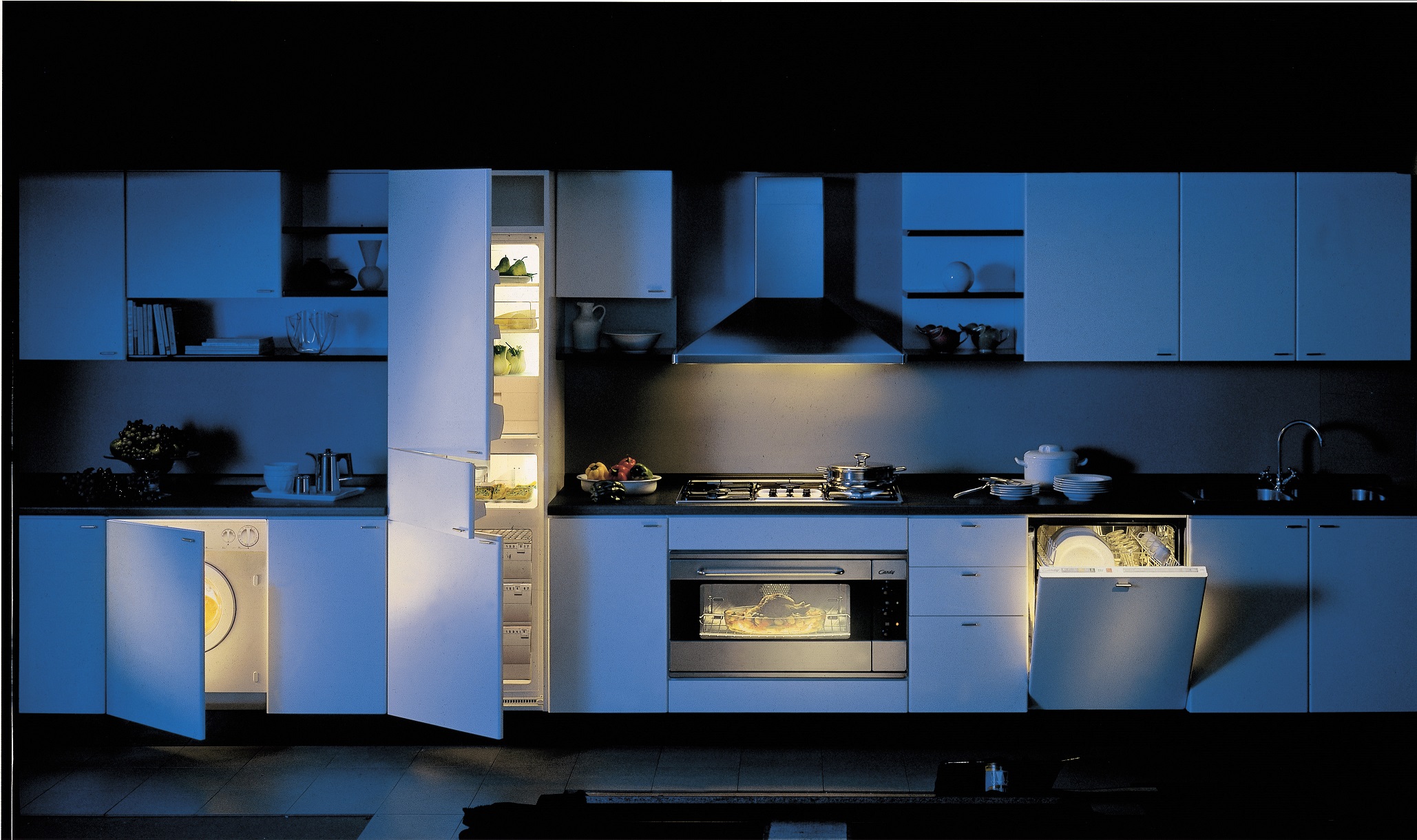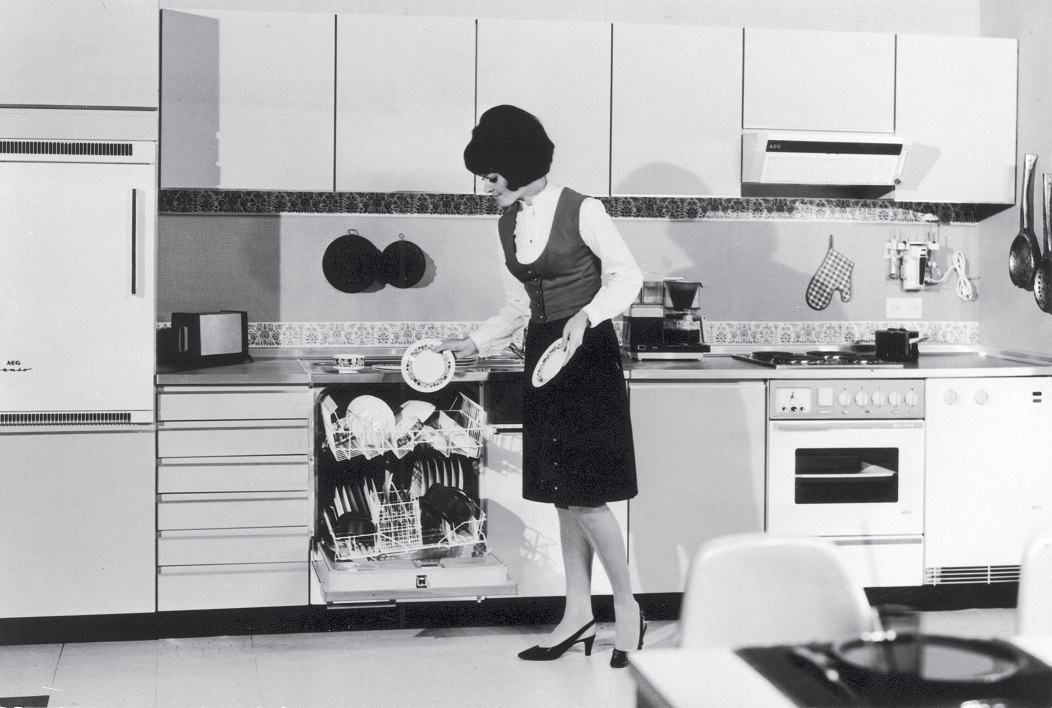A journey through the history of built-in, to discover what has changed in terms of design and what are the aesthetic lines of today: from the most functional solutions to the importance of details

The history of built-in follows the history of modular kitchen and the attention to design is closely linked to the interest for this kind of environment. It’s in the Sixties that the first modular kitchens begin to be developed, due to the need of a more organized and functional space. The goal was to make the kitchen more practical, organizing it and making it more efficient. Even appliances, whose first built-in models date back to the Fifties, follow these guidelines and start to become modular and functional, while the aesthetics is a little bit sacrificed: functionality always gets the first place. In the Seventies, the modular kitchens are much more present in the Italian homes and, consequently, the built-in appliances also increase. The lines are rigid enough and the kitchen becomes a sort of joint where everything must be entered at best. Those years see the start of a greater attention to aesthetics, involving also famous designers, but the built-in was less involved, because it is less visible and there are no big creative impulses. In the Eighties, there is the tendency to show and emphasize everything, so, in the case of the household appliances, there is the tendency to put greater emphasis on technology. The use of metal finishes and metal materials, enhancing the technological character, increases, and there are more buttons and knobs in view. The lines, however, are still rather boxy and rigid. Finally a more comprehensive and integrated view of the built-in appliances and of the furniture for kitchen starts. Over the following decade there is a greater emphasis on the ergonomic forms, however minimalism predominates and the household appliance becomes as hidden and invisible as possible, except the oven where steel is often used. The turning point that led to a bigger care and great attention to design, even for the built-in appliances, occurs when the kitchen opens itself to the living space, especially over the last fifteen years: finally the kitchen is no longer a space to hide but to live fully. The kitchen becomes more accurate and pleasant and the same thing occurs to the household appliances. The lines become softer and smoother and there is great attention to details.
There is the cooling appliance but it’s not visible
The refrigerator is the built-in appliance that is more hidden, because it has nothing in view: the door is covered by the panel of the kitchen and is visible only at the time of the opening. For this reason, the design regards only the interior, with the use of glass shelves that, for ten years, have replaced the metal shelves; sometimes the shelves have Led lights or steel edges, solutions that bring style and value.
| The refrigerator changes look Long gone are the days when plastic was the main protagonist in the refrigerator, though this material never lacks in the door shelves and in the area for the fresh food, but now it tends to the essential and plastic is less important. The fridge is always white on the inside, as a symbol of hygiene and cleanliness, but the transparent parts increase to let see the content. Some companies offer built-in models with door that should not be coated with the panel similar to the kitchen: they are midway solutions between built-in and the free-standing, more aesthetically pleasing. |
Cooking: steel and glass
The devices dedicated to cooking are the most interested by the design because they have always been the most visible. The aesthetics has changed a lot over the decades: for the hobs, lines are softened and, as in the ovens, there is a tendency to cleaned and essentials lines. Often the details make the difference: the handles and knobs are smaller, controls are simpler and more immediate, shelves are lighter. Steel always plays an important role in these devices, although it is no longer the absolute protagonist. A big progress in aesthetics was the definition of anti-fingerprint finishes, but also of special steels: in fact, the steel is nice when polished. One example is iXelium by Whirlpool, treated with nanotechnologies to prolong its beauty and ensure a surface highly resistant to scratches and yellowing, and easy to clean. Together with the steel, for some years also the glass tends to become more and more important in the cooking area. In fact, the glass allows to see how cooking is progressing in the oven. Besides, the glass makes hobs more essential, especially if they are electric hobs, without burners and pan supports typical of the gas appliances. For some years also the color returned, though pale, delicate and not vibrant. The built-in hood, visible only in small part and having the bigger part of the product inserted into the structure above the hob, appears less involved in design. Steel and glass are the most widely used materials to innovate this product.

Washing products: the care of the dashboard
Dishwashers and washing machines are divisible in two kinds from an aesthetic point of view: totally invisible or with the dashboard in view, always with the covering panel fixed to the door. The invisible version began to spread in the Nineties, in search of a total cover-up. From the point of view of design, the dashboard is important, passing from the many buttons of the Eighties and Nineties and from a color often dark gray or white, to digital panels and most basic and simple lines.
Design and lifestyle: the latest trends
Two famous designers – Valentina Bertazzoni, Brand Manager of Bertazzoni and Fabrizio Crisà, Responsible of Elica Design Center – tell their opinions on how the design of the kitchen is changing and what are the new trends for home appliances. “In my opinion – says Valentina Bertazzoni – the three key words about design are: functionality, home furnishings and technology. By the time the appliance industry has had to respond to different inputs coming from different sectors and today it is unthinkable to talk about good design in a product if it does not contain all of these elements”. Examining the preferences of consumers, the steel is always quite the star. “The purity of this material – says Valentina Bertazzoni – brings together design lovers, cooking lovers, those looking for a product that lasts over time and also who cares about the product for every day”. The houses and the kitchens have changed a lot in recent years and appliances have evolved to adapt to changing lifestyles of people. “Today we have a big challenge – says Valentina Bertazzoni -: our homes are getting smaller and the time that a person can devote to the kitchen is increasingly reduced. We believe in a design that is able to respond to these needs by providing the user a product with maximum flexibility in terms of performance and layout. The segmented induction hobs are an example, where in a plan with standard dimensions the user can choose the configuration and the type of technology that is best suited to his style of kitchen: gas, induction, and electric plate in seven different configurations and two dimensions”. “Over the last few years – adds Fabrizio Crisà – the way in which people use the kitchen has changed a lot. From closed space and hidden from view, the kitchen has become a space to show, closely connected with the living. For the last ten years greater attention has been paid to the design of household appliances, even for low-end and midrange kitchens. The hood is an appliance that has often been hidden. True, the hood is the most difficult device, because in a sense it is the least essential. The hood is also an appliance for which it is possible to do much, because over the years it has had little evolution. We have worked hard to transform it and give it value especially in the decorative function”. With regard to the built-in products, they are products almost totally hidden from view, but design products nevertheless. “We work for different markets – says Crisà – and the demands are different: some aim to leave seeing at least a part of the appliance, others prefer that nothing is visible. There is always an attention to detail, to make a product nice but invisible, charming with as little as possible in view”. Among the latest news by Elica there is a hood that becomes a kitchen cabinet, “a sort of aquarium with glass – Crisà comments – where there is a total integration between the kitchen and the hood. Both reciprocally give value themselves, creating a unique structure. Surely it is a solution that breaks the mold”. With regard to the latest trends in the kitchen, according Crisà “white is always the most popular tone, but also the color is back, especially in earth and pastel tones, always dosed without excess”.
| Bertazzoni and the designer Andries Van Onk Valentina Bertazzoni, Brand Manager of Bertazzoni, explains the importance of design within the company, that was born in 1882 in Guastalla (Reggio Emilia, central Italy) and is specialized in the field of cooking. “In the mid-Eighties - says Valentina Bertazzoni - my father, Paolo Bertazzoni, who has always had a passion for design and inspired by the many inspirations that he saw in his journeys abroad, he felt the need to start working with a designer of international importance. The collaboration with Andries Van Onk dates back to that time, who designed for our company built-in products of great success until the end of the Nineties. Subsequently, the road of the collaborations with the world of design has become the norm in Bertazzoni”. “In our company - the manager continues - the design is a work of group: engineers must ensure that the product is functional, technologically innovative and manufacturable with the best quality; designers study lines, finishes and everything about the style; and, as a brand manager, I make sure that in every Bertazzoni product there are the values that characterize the company for over 130 years, maintaining our identity with a unique and recognizable design”. |



